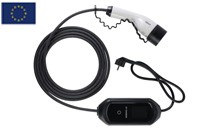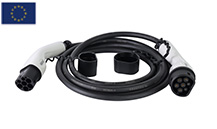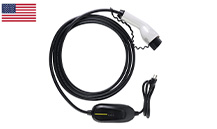EV charging is divided into four charging modes, which differ in terms of charging safety, speed and mobility, etc. Usually, charging cables are also selected based on the charging mode, and now FAFA-E, the EV charger manufacturer, takes you through these four charging modes in general.
Charging mode 1: EV charging is connected directly to a household AC outlet through a charging cable. This charging mode lacks protection and cannot communicate with the vehicle, and has basically been eliminated from the market.
Charging mode 2: This mode differs from mode 1 by adding ICCB controller integrated in the cable, which can establish communication with the vehicle through the control wire. FAFA-E provides mode 2 portable charger, if you need it, contact us.
Charging mode 3: This mode is one of the common charging modes for alternating current (AC) charging, the charging station of mode 3 is not movable, the charging cable wants to connect to this charging station, usually the vehicle owner needs to carry the charger by himself, FAFA-E provides you with mode 3 with portable charger to provide you with charging convenience.
Charging mode 4: The charging cable is integrated in the DC charging post, which is different from other modes, the conversion from AC to DC in this mode happens in the charging post, and the DC power is directly output from the charging post to the vehicle.
Regardless of the charging connection mode, EV charging cables are subject to natural and man-made environmental factors that can affect the transmission of electricity to the EV.
Natural factors: EV charging cables are mostly used outdoors and may suffer from the natural environment such as sunlight, rain and oil during use, which may reduce the service life and performance of the cable and cause damage to the cable in serious cases and affect its use.
Human factors: EV charging cables will inevitably be artificially over-bent, twisted, dragged or even stretched in the process of use, which will easily cause different degrees of mechanical damage to the cable line.
Due to the special nature of the use environment, the material and performance of the cable are highly demanded for EV charging safety.
FAFA-E charging cable products have the following advantages: soft, good hand feeling, bending radius less than 5D; oil resistance, acid and alkali resistance, water resistance, wear resistance, crush resistance, crack resistance, UV resistance, stable color; good flame retardant performance; bending resistance more than 50,000 times; all materials meet the latest environmental standards of RoHS & REACH.
For those who are interested in our products, please pay attention to FAFA-E official website for more detailed information:.https://www.fafa-e.com/






 简体中文
简体中文
